Audi Q4 e-tron vs Hyundai Tucson – Kumpi auto sopii sinulle paremmin?
Molemmilla malleilla on vahvuutensa – mutta kumpi sopii sinulle paremmin?
Vertaa suorituskykyä, kulutusta, hintaa ja tiloja suoraan: Audi Q4 e-tron vai Hyundai Tucson?
Audi Q4 e-tron vs. Hyundai Tucson: A Showdown of Modern SUVs
As the automotive market shifts towards enhanced efficiency and innovative technologies, electric vehicles (EVs) and hybrid models are gaining significant traction among consumers. In this article, we take a closer look at two remarkable SUVs: the Audi Q4 e-tron and the Hyundai Tucson. Both vehicles represent their respective brands' commitment to performance, comfort, and sustainability, but each offers unique attributes that cater to different driver preferences. Let’s dive into a technical comparison of these two compelling options.
Powertrain Variants and Performance
The Audi Q4 e-tron is an all-electric SUV that showcases Audi’s advanced electric vehicle technology. With various power outputs ranging from 170 HP to a robust 340 HP, the Q4 e-tron is available in both rear-wheel drive and all-wheel drive configurations. The impressive acceleration capability of the Q4 e-tron lets it sprint from 0 to 100 km/h in as little as 5.4 seconds, depending on the selected variant.
On the other hand, the Hyundai Tucson offers a more diverse range of powertrains including conventional petrol, diesel, hybrid, and plug-in hybrid options, catering to a broader audience. Power outputs for the Tucson range from 136 HP to 252 HP, with acceleration figures peaking at 7.9 seconds for the sportier configurations. The ability to choose between several engine types makes the Tucson highly versatile and appealing for different consumers.
Electric Range and Fuel Efficiency
The Q4 e-tron excels with an electric range of up to 554 km, making it a fantastic option for those seeking longer journeys without the anxiety of frequent recharging. Its power consumption is impressively economical, averaging around 15.9 to 17.4 kWh/100 km across its variants.
In comparison, the Hyundai Tucson provides traditional fuel efficiency with consumption figures ranging between 1.0 L/100 km (for hybrid models) to 6.8 L/100 km for petrol engines. However, the Tucson's electric range for hybrid versions is more limited, maxing out at around 70 km. While this may not match the electric range of the Q4 e-tron, it reflects Tucson's versatility for those who may not be ready to fully commit to an electric vehicle.
Interior Technology and Comfort Features
Both the Q4 e-tron and Tucson boast modern interior designs filled with tech-forward features. The Audi Q4 e-tron presents a minimalist cabin with high-quality materials and an intuitive infotainment system that includes a digital cockpit and a central touchscreen display. Innovations such as virtual cockpit settings and ambient lighting further elevate the driving experience.
The Hyundai Tucson, meanwhile, features a more spacious interior with user-friendly technology, highlighted by a large touchscreen interface and a digital instrument cluster. With a focus on convenience, the Tucson incorporates features such as wireless charging, smartphone connectivity, and a comprehensive suite of advanced driver-assistance systems. Tucson's added space and practical trunk capacity—up to 620 L—ensure it remains competitive in terms of usability.
Safety and Sustainability
In terms of safety, both vehicles achieve high marks. The Q4 e-tron is equipped with Audi's renowned safety technologies, including adaptive cruise control, lane departure warning, and automated emergency braking. The Hyundai Tucson also includes advanced safety features such as forward collision warning, blind-spot monitoring, and highway driving assist, making it a strong contender in terms of safety ratings.
When it comes to sustainability, the Audi Q4 e-tron claims the spotlight with its all-electric powertrain, resulting in zero CO2 emissions. The Hyundai Tucson, while still efficient, offers several hybrid options that promote reduced emissions—though not entirely zero—appealing to those who are transitioning towards electric technologies.
Conclusion: Which SUV is Right for You?
The competition between the Audi Q4 e-tron and the Hyundai Tucson highlights the dynamic landscape of the automotive industry as it evolves towards cleaner energy. If you are looking for a dedicated electric vehicle with impressive range and performance, the Audi Q4 e-tron is likely the better choice. However, if you prefer a versatile SUV equipped with multiple powertrain options and a strong emphasis on fuel efficiency, the Hyundai Tucson stands out as an excellent alternative.
Ultimately, your decision will depend on your personal preferences, driving habits, and commitment to electric mobility. Either way, both the Q4 e-tron and Tucson are exceptional representations of their brands, making them worthy considerations in the competitive SUV market.
Tässä mennään yksityiskohtiin: tekniset erot tarkemmin
Kustannukset ja kulutus: Hinta ja kulutus ovat tärkeimpiä ostopäätökseen vaikuttavia tekijöitä – ja juuri täällä erot usein korostuvat.
Hyundai Tucson on hinnassa ilmeinen edullisempi – sen lähtöhinta on 35700 €, kun taas Audi Q4 e-tron maksaa 46200 €. Ero on noin 10410 €.
Toimintamatkassa Audi Q4 e-tron suoriutuu vakuuttava paremmin: se yltää jopa 554 km:een, noin 484 km enemmän kuin Hyundai Tucson.
Moottori ja suorituskyky: Teho, vääntömomentti ja kiihtyvyys kertovat paljon auton ajotuntumasta. Tässä näkyy, kumpi tarjoaa enemmän ajamisen iloa.
Moottoritehossa Audi Q4 e-tron on ilmeinen etulyöntiasemassa – 340 hv verrattuna 252 hv:een. Ero on noin 88 hv hv.
Kiihdytyksessä 0–100 km/h Audi Q4 e-tron on vakuuttava nopeampi – 5.40 s vs. 7.90 s. Ero on noin 2.50 s sekuntia.
Huippunopeudessa Hyundai Tucson on kevyt edellä – se yltää 194 km/h:een, kun taas Audi Q4 e-tron saavuttaa 180 km/h. Ero on noin 14 km/h.
Vääntömomentissa näkyy myös ero: Audi Q4 e-tron vetää vakuuttava voimakkaammin, 679 Nm verrattuna 367 Nm:een. Eroa on noin 312 Nm.
Tila ja käytännöllisyys: Sisätilat, tavaratila ja kantavuus ratkaisevat auton arjen käytettävyyden. Mukavuus ja joustavuus ovat avainasemassa.
Molemmissa autoissa on tilaa 5 henkilölle.
Omapainossa Hyundai Tucson on ilmeinen kevyempi – 1520 kg verrattuna 2035 kg:een. Painoero on noin 515 kg.
Tavaratilan koossa Hyundai Tucson tarjoaa pienessä määrin enemmän – 620 L verrattuna 535 L:een. Ero on noin 85 L.
Maksimikantavuudessa Hyundai Tucson pärjää pienessä määrin paremmin – jopa 1799 L, noin 309 L enemmän kuin Audi Q4 e-tron.
Kantavuudessa Hyundai Tucson on tuskin havaittava parempi – 545 kg verrattuna 515 kg:een. Ero on noin 30 kg.
Yhteenvetomme: Audi Q4 e-tron osoittautuu olevan antaa kilpailijalle vähän mahdollisuuksia ja saa siksi tittelin DriveDuel Champion!
Tässä vertailussa Audi Q4 e-tron on monipuolisempi kokonaisuus.
Audi Q4 e-tron
Audi Q4 e-tron yhdistää tyylikkään muotoilun ja ympäristöystävällisen sähköajettavuuden. Tämä älykäs SUV tarjoaa tilavan ja modernin sisätilan, joka tekee siitä erinomaisen valinnan perheille ja aktiivisille elämäntavoille. Korkealaatuiset materiaalit ja huipputeknologia tekevät ajokokemuksesta nautinnollisen ja vaivattoman.
Tiedot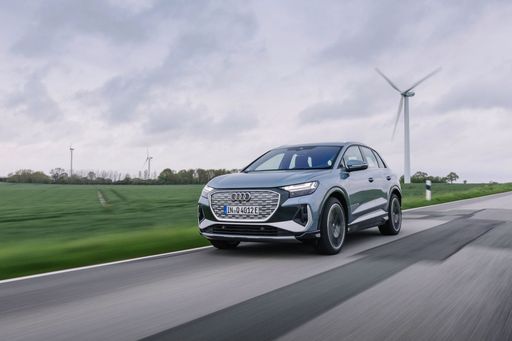 @ audi-mediacenter.com
@ audi-mediacenter.com
 @ audi-mediacenter.com
@ audi-mediacenter.com
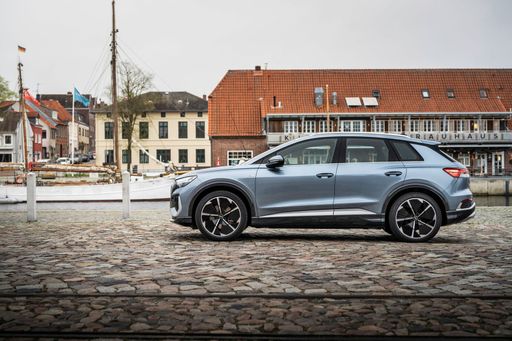 @ audi-mediacenter.com
@ audi-mediacenter.com
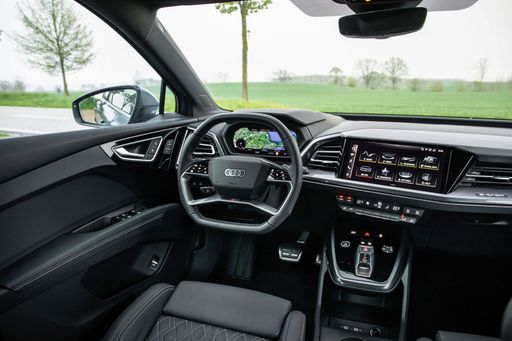 @ audi-mediacenter.com
@ audi-mediacenter.com
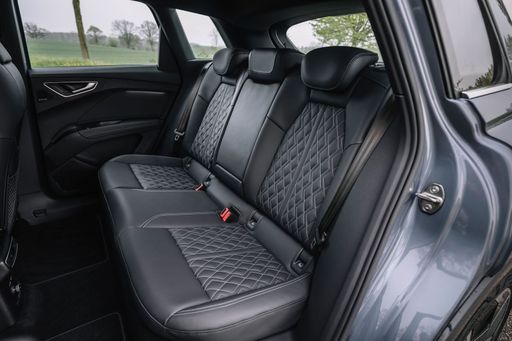 @ audi-mediacenter.com
@ audi-mediacenter.com
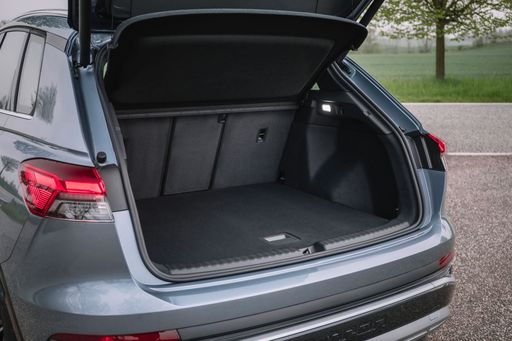 @ audi-mediacenter.com
@ audi-mediacenter.com
Hyundai Tucson
Hyundai Tucson on saanut paljon kiitosta tyylikkäästä muotoilustaan ja tilavasta sisätilastaan, joka tarjoaa mukavuutta perheille ja matkustajille. Sen modernit ominaisuudet ja älykäs teknologia tekevät ajamisesta vaivattomampaa ja turvallisempaa. Tucson yhdistää upeasti käytännöllisyyden ja tyylin, tehden siitä erinomaisen valinnan kaupunkiajoon ja pidemmille matkoille.
Tiedot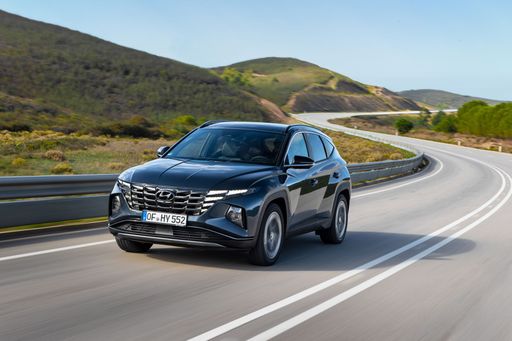 @ hyundai.news
@ hyundai.news
 @ hyundai.news
@ hyundai.news
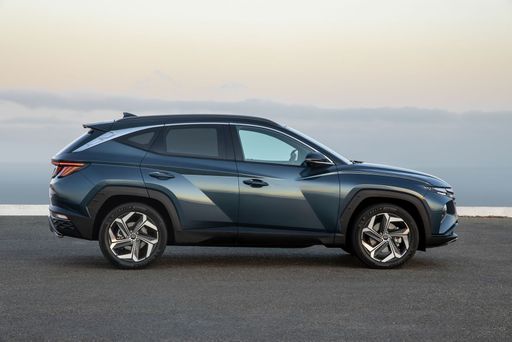 @ hyundai.news
@ hyundai.news
 @ hyundai.news
@ hyundai.news
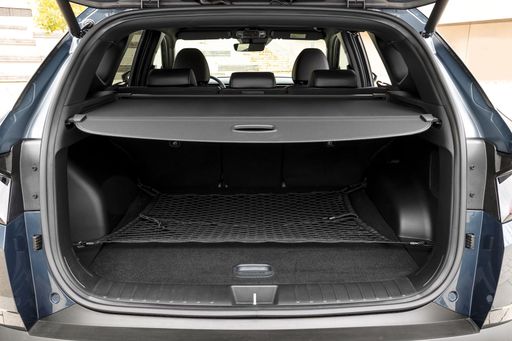 @ hyundai.news
@ hyundai.news

|

|
|
|
|
Kustannukset ja kulutus |
|
|---|---|
|
Hinta
46200 - 68600 €
|
Hinta
35700 - 54100 €
|
|
Kulutus L/100km
-
|
Kulutus L/100km
1 - 6.9 L
|
|
Kulutus kWh/100km
15.9 - 17.4 kWh
|
Kulutus kWh/100km
-
|
|
Sähköinen toimintasäde
406 - 554 km
|
Sähköinen toimintasäde
64 - 70 km
|
|
Akun kapasiteetti
59 - 77 kWh
|
Akun kapasiteetti
-
|
|
CO2
0 g/km
|
CO2
22 - 156 g/km
|
|
Polttoainesäiliön tilavuus
-
|
Polttoainesäiliön tilavuus
42 - 54 L
|
Mitat ja kori |
|
|---|---|
|
Kori
SUV
|
Kori
SUV
|
|
Istuimet
5
|
Istuimet
5
|
|
Ovet
5
|
Ovet
5
|
|
Omamassa
2035 - 2235 kg
|
Omamassa
1520 - 1889 kg
|
|
Tavaratila
520 - 535 L
|
Tavaratila
546 - 620 L
|
|
Pituus
4588 mm
|
Pituus
4510 - 4520 mm
|
|
Leveys
1865 mm
|
Leveys
1865 mm
|
|
Korkeus
1614 - 1632 mm
|
Korkeus
1650 mm
|
|
Maksimi tavaratila
1460 - 1490 L
|
Maksimi tavaratila
1721 - 1799 L
|
|
Kantavuus
505 - 515 kg
|
Kantavuus
525 - 545 kg
|
Moottori ja suorituskyky |
|
|---|---|
|
Moottorityyppi
Sähkö
|
Moottorityyppi
Diesel MHEV, Bensiini MHEV, Bensiini, Täyshybridi, Plug-in hybridi
|
|
Vaihteisto
Automaatti
|
Vaihteisto
Automaatti, Manuel
|
|
Vaihteiston tyyppi
Alennusvaihteisto
|
Vaihteiston tyyppi
Kaksoiskytkin automaatti, Manuaalivaihteisto, Automaattivaihteisto
|
|
Vetotapa
Takaveto, Neliveto
|
Vetotapa
Etuveto, Neliveto
|
|
Teho hv
204 - 340 hv
|
Teho hv
136 - 252 hv
|
|
Kiihtyvyys 0-100 km/h
5.4 - 8.1 s
|
Kiihtyvyys 0-100 km/h
7.9 - 11.6 s
|
|
Huippunopeus
160 - 180 km/h
|
Huippunopeus
180 - 194 km/h
|
|
Vääntömomentti
310 - 679 Nm
|
Vääntömomentti
265 - 367 Nm
|
|
Sylinterien lukumäärä
-
|
Sylinterien lukumäärä
4
|
|
Teho kW
150 - 250 kW
|
Teho kW
100 - 185 kW
|
|
Iskutilavuus
-
|
Iskutilavuus
1598 cm3
|
Yleiset |
|
|---|---|
|
Mallivuosi
2023 - 2025
|
Mallivuosi
2024
|
|
CO2-tehokkuusluokka
A
|
CO2-tehokkuusluokka
E, F, D, B
|
|
Merkki
Audi
|
Merkki
Hyundai
|
Millaisia voimalinjoja Audi Q4 e-tron:ssa on saatavilla?
Mallia tarjotaan Takaveto tai Neliveto-versiona.
Näytetyt hinnat ja tiedot ovat arvioita, jotka perustuvat Saksan listahintoihin, ja voivat vaihdella maittain. Nämä tiedot eivät ole oikeudellisesti sitovia.
